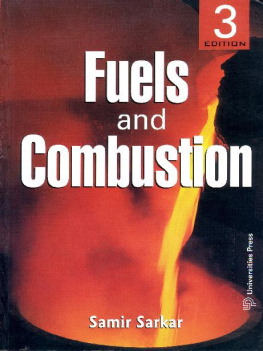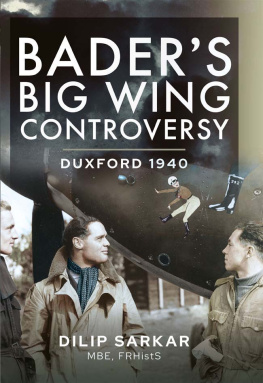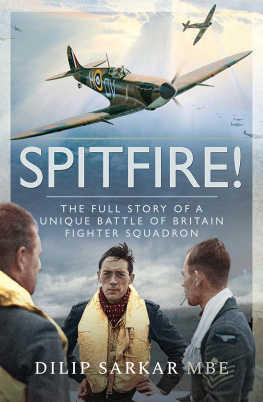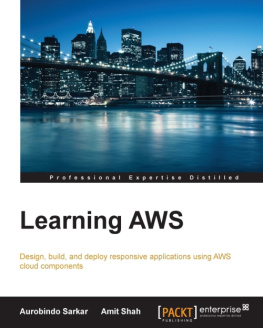Arita Sarkar - Kidnapped
Here you can read online Arita Sarkar - Kidnapped full text of the book (entire story) in english for free. Download pdf and epub, get meaning, cover and reviews about this ebook. year: 2019, publisher: Penguin Random House India Private Limited, genre: Detective and thriller. Description of the work, (preface) as well as reviews are available. Best literature library LitArk.com created for fans of good reading and offers a wide selection of genres:
Romance novel
Science fiction
Adventure
Detective
Science
History
Home and family
Prose
Art
Politics
Computer
Non-fiction
Religion
Business
Children
Humor
Choose a favorite category and find really read worthwhile books. Enjoy immersion in the world of imagination, feel the emotions of the characters or learn something new for yourself, make an fascinating discovery.
- Book:Kidnapped
- Author:
- Publisher:Penguin Random House India Private Limited
- Genre:
- Year:2019
- Rating:4 / 5
- Favourites:Add to favourites
- Your mark:
- 80
- 1
- 2
- 3
- 4
- 5
Kidnapped: summary, description and annotation
We offer to read an annotation, description, summary or preface (depends on what the author of the book "Kidnapped" wrote himself). If you haven't found the necessary information about the book — write in the comments, we will try to find it.
Kidnapped — read online for free the complete book (whole text) full work
Below is the text of the book, divided by pages. System saving the place of the last page read, allows you to conveniently read the book "Kidnapped" online for free, without having to search again every time where you left off. Put a bookmark, and you can go to the page where you finished reading at any time.
Font size:
Interval:
Bookmark:




PENGUIN BOOKS

PENGUIN BOOKS
PENGUIN BOOKS
Arita Sarkar is a journalist based out of Mumbai. Since 2011, she has been a reporter at The Hindu, Mumbai Mirror, the Indian Express and Mid-Day. Her interest in cases concerning the Juvenile Justice Act, the Protection of Children from Sexual Offences (POCSO) Act and child rehabilitation led her to research and write a book about the widespread kidnapping of children in India.
After completing her schooling from the American International School/Dhaka, she graduated from Delhi University with a degree in English literature and later attended the Asian College of Journalism in Chennai. Apart from being a writer, she is an ardent lover of music and food and loves to dabble in a bit of both.
To Anandana Kapur, for being a solid sounding board, to my family, for supporting the choices I have made in life, and to all the children who never made it back home.
Back in 1953, when the National Crime Records Bureau (NCRB) published its first report, 5261 cases of kidnapping were reported that year. By 1994, the NCRB included a separate chapter on crimes against children. Apart from cases of kidnapping, the chapter provided state-wise data on the broader categories of crimes such as infanticide, rape and murder. That year, 864 cases had been filed wherein a child had been abducted.
In 2013, the Supreme Court passed a judgment that made it compulsory for the police to register all cases of missing children (as First Information Reports [FIRs]) and treat them as cases of kidnapping or trafficking. A significant increase was noted as the figure shot up from 28,167 in 2013 to 38,555 in the following year. With more awareness, more people reported crimes. But as far as kidnapping cases are concerned, the police say not much can be done to deter criminals. So, while the increase in numbers was a cause for concern, it didnt really change the way the police treat the cases. It was merely an indication that more people had come forward to report them. Individually, all cases where kidnapping of a child is involved are taken up on a priority basis.
It wasnt until 2014 that the NCRB decided to dedicate a chapter exclusively to kidnapping- and abduction-related statistics, which included data sorted by age group, sex and around fourteen kinds of motives. The number of child victims continued to grow substantially and as of 2016, the most current statistics available at the time of publishing, the figure stood at 54,328, with the highest number of cases reported in Uttar Pradesh.
Kidnapping is a serious offence, and according to the Indian Penal Code (IPC), it attracts a punishment of imprisonment that can extend up to seven years. Another section of the IPC specifically refers to kidnapping for ransom where a person is detained and the kidnapper threatens to kill or harm the victim. The punishment for this kind of offence could be a life or even a death sentence.
This book includes cases where multiple serious offences have been committed in a single case. For instance, in one of them, a child was kidnapped, raped and then murdered. In such extreme cases, the accused may be sentenced to life or even death.
The annual reports are an essential source of information for the government since the data helps them understand the extent of the problem and accordingly maintain law and order in the country. Highlighting its importance, Meeran Chadha Borwankar, a retired IPS (Indian Police Service) officer and former director general of the NCRB, said that the Centre and state governments both rely on data collected by the NCRB from the State Crime Records Bureau (SCRB), which helps to understand crime patterns.
She added that many in the police force feel that increase and decrease in data on crimes does not reflect the true picture, since most cases in India go unreported. While the observation rings true in the case of petty crimes like thefts and chain snatching, Meeran finds the data on serious crimes like murders, kidnapping for ransom, fatal accidents and dacoities, among others, to be fairly accurate since nearly all the cases are reported. It may have a few deficiencies that we constantly strive to overcome but the NCRB statistics provide the basis for all crime-related discussions. The states depend on the data for crime analysis and developing strategies, while the Ministry of Home Affairs in New Delhi depends on the NCRB to deal with all-India crime patterns or analysis, she said.
As per the IPC, since there are different sections for the same offence, a logical classification of section-wise data can help the policymakers amend the existing laws for the prevention of specific crimes. In order to deploy police forces effectively, the state and central governments have to know the status of crime rates in every state. The information is useful to the government as well as the general public, especially citizen activists.
K.P. Asha Mukundan, a professor in the department of criminology and correctional administration at the Tata Institute of Social Sciences in Mumbai, said that the data is pivotal for research in order to understand the nuances of criminal activity in the country. Since the data is available, citizens dont have to file an RTI [Right to Information] application to get access to the crime rates in their city or state. The data is also required when someone has to file a PIL [public interest litigation] in court, she said.
The data, however, is not an accurate picture of reality. In India, people are generally unwilling to get involved with the police, and as a result many cases go unreported. Akhilesh Kumar, former chief statistical officer at the NCRB, said, Based on the trend in developing countries, only 60 per cent of the crimes are being registered while the rest are unaccounted for. Due to the social stigma that exists in our society, people dont want to be involved in the lengthy process of registering a complaint.
As helpful as the NCRBs crime records are, there are several flaws the administration has not been able to address till date. In fact, at the beginning of every annual report, there is a disclaimer that says that the NCRB is not responsible for the authenticity of the data since it is only compiled and collated as provided by the states.
The data currently collected from police stations across the country only includes the number of the FIR that has been registered, which only takes cognizable crimes (serious offences like murder and rape) into consideration. Another former NCRB official, who didnt wish to be named, said that the NCRB doesnt count non-cognizable offences or petty crimes (for instance, public nuisance, simple hurt or mischief), which leaves out a significant number of cases.
The method of counting the principal offence is possibly the most commonly debated flaw.
While counting the number of cases, only the principal offence or the charge that attracts the maximum penalty is taken into consideration. Journalists, activists and even the NCRB officials agree that this practice has led to undercounting of the number of cases. While there is no suppression of the number of cases in the data, misclassification might contribute to undercounting of the cases. For instance, if there is a case of kidnapping and murder, the case will only be counted once in the murder column, said the NCRB official.
Font size:
Interval:
Bookmark:
Similar books «Kidnapped»
Look at similar books to Kidnapped. We have selected literature similar in name and meaning in the hope of providing readers with more options to find new, interesting, not yet read works.
Discussion, reviews of the book Kidnapped and just readers' own opinions. Leave your comments, write what you think about the work, its meaning or the main characters. Specify what exactly you liked and what you didn't like, and why you think so.











